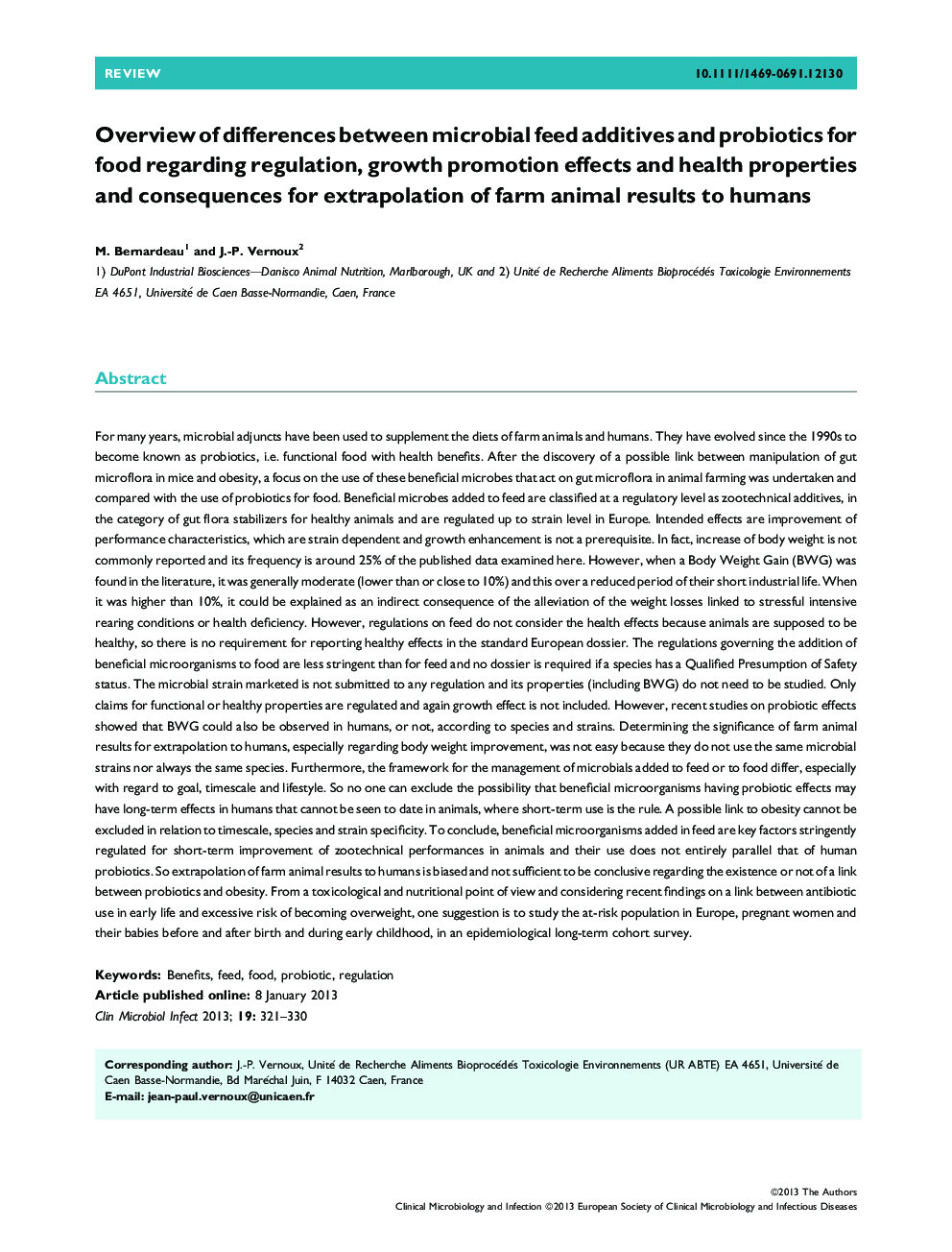| Article ID | Journal | Published Year | Pages | File Type |
|---|---|---|---|---|
| 3396766 | Clinical Microbiology and Infection | 2013 | 10 Pages |
For many years, microbial adjuncts have been used to supplement the diets of farm animals and humans. They have evolved since the 1990s to become known as probiotics, i.e. functional food with health benefits. After the discovery of a possible link between manipulation of gut microflora in mice and obesity, a focus on the use of these beneficial microbes that act on gut microflora in animal farming was undertaken and compared with the use of probiotics for food. Beneficial microbes added to feed are classified at a regulatory level as zootechnical additives, in the category of gut flora stabilizers for healthy animals and are regulated up to strain level in Europe. Intended effects are improvement of performance characteristics, which are strain dependent and growth enhancement is not a prerequisite. In fact, increase of body weight is not commonly reported and its frequency is around 25% of the published data examined here. However, when a Body Weight Gain (BWG) was found in the literature, it was generally moderate (lower than or close to 10%) and this over a reduced period of their short industrial life. When it was higher than 10%, it could be explained as an indirect consequence of the alleviation of the weight losses linked to stressful intensive rearing conditions or health deficiency. However, regulations on feed do not consider the health effects because animals are supposed to be healthy, so there is no requirement for reporting healthy effects in the standard European dossier. The regulations governing the addition of beneficial microorganisms to food are less stringent than for feed and no dossier is required if a species has a Qualified Presumption of Safety status. The microbial strain marketed is not submitted to any regulation and its properties (including BWG) do not need to be studied. Only claims for functional or healthy properties are regulated and again growth effect is not included. However, recent studies on probiotic effects showed that BWG could also be observed in humans, or not, according to species and strains. Determining the significance of farm animal results for extrapolation to humans, especially regarding body weight improvement, was not easy because they do not use the same microbial strains nor always the same species. Furthermore, the framework for the management of microbials added to feed or to food differ, especially with regard to goal, timescale and lifestyle. So no one can exclude the possibility that beneficial microorganisms having probiotic effects may have long-term effects in humans that cannot be seen to date in animals, where short-term use is the rule. A possible link to obesity cannot be excluded in relation to timescale, species and strain specificity. To conclude, beneficial microorganisms added in feed are key factors stringently regulated for short-term improvement of zootechnical performances in animals and their use does not entirely parallel that of human probiotics. So extrapolation of farm animal results to humans is biased and not sufficient to be conclusive regarding the existence or not of a link between probiotics and obesity. From a toxicological and nutritional point of view and considering recent findings on a link between antibiotic use in early life and excessive risk of becoming overweight, one suggestion is to study the at-risk population in Europe, pregnant women and their babies before and after birth and during early childhood, in an epidemiological long-term cohort survey.
